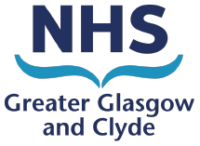A pioneering service which helps to reduce the number of people suffering from bone fractures by identifying and treating those most at risk of osteoporosis is celebrating its 20th year. The Fracture Liaison Service (FLS) was the brainchild of Glasgow based doctors, Stephen Gallacher and Alastair McLellan and has since been adopted by health services across the world.
Their idea was simple – they realised that by checking patients over the age of 50 who presented with a fracture for osteoporosis, and treating those diagnosed, they could help prevent future breaks. A simple scan spots any issues with bone density and, if required, those at risk can be given a number of treatment options, including low-cost drug treatments to strengthen and protect bones and muscles.
Last July, Margaret Cuddihy reached for the top shelf of her fridge, lost her balance and fell on to hard kitchen tiles. Her arm took the brunt of the impact.
“I knew immediately that something was up, as I couldn’t get off the floor,” she said. “I’m 80 and I’ve had loads of falls before and I’ve got two artificial knees, but that was the first time I’ve ever broken a bone!”
Margaret, a retired midwife from Giffnock, was treated at the Queen Elizabeth University Hospital for her broken wrist. Her arm was reset and put in a cast. She was later contacted by a specialist FLS nurse and a scan revealed she had mild osteoporosis. As well as receiving one-on-one physiotherapy, the diagnosis has led to Margaret being prescribed Vitamin D, calcium and alendronic acid, a low-cost, bone strengthening therapeutic.
Dr Gallacher, a Consultant Endocrinologist based at the Queen Elizabeth University Hospital, says early diagnosis of osteoporosis brings huge benefits. “For years we’ve had therapies and medications which can reduce fracture risk by as much as 50 per cent,” he explained.
“We see a huge amount of fractures every year. We’ve got a population that’s getting older and more frail. The more we can reduce the risk of fractures, the longer people live and the higher their quality of life. The FLS has the potential to reduce fractures by 20 per cent across the population. That’s a huge improvement in quality of life for those who benefit.”
The numbers are significant. Almost one in two women, and one in five men, over 50 will get a bone fracture and between 10 to 20 per cent of people with a hip fracture die within a year. If someone in that age bracket presents at hospital with a fracture, then the risk of further fractures doubles. Across NHS Greater Glasgow and Clyde’s acute sites, 11 specialist nurses identify patients over 50 who present with a fracture at hospital. They also identify patients who might be at risk through outpatient x-ray and orthopaedic records.
Dr Gallacher’s work has recently been recognised with an award from the Royal Osteoporosis Society for his ‘significant contribution to the field of osteoporosis and being a tireless advocate that has changed policy and healthcare services for the better’.
The society’s Chief Executive, Craig Jones, added: “The development of the FLS has advanced the identification and treatment of this life-changing condition and played a significant role in improving the lives of those with osteoporosis.”
Stephen is modest about the achievement. He said: “It’s been 20 years since we started and it’s really pleasing to see our concept rolled out right across the world. It’s nice to look back and say that it’s made a difference. But on a day-to-day basis, it’s all about the team and we’ve got teams across all acute sites helping to reduce fracture risk each and every day. The difference that makes to people’s lives is extraordinary.”
It’s a sentiment echoed by Margaret as she continues her recovery. She continues her physio and has started online Tai Chi classes. She has had tips on safe walking and has got rid of her mule type shoes and slippers.
“There’s been lots of assistance all designed to keep me healthy – and I want to thank all of the team who have been involved,” she added.
“My confidence in the house is much, much better – and with all this help and work to keep my bones and muscles healthy, I’m sure I’ll be able to get back to doing everything I used to. It’s a really good service and it shows that with the right support a bad fall or broken bones can’t keep you down.”
Tips for improving your bone health
Dr Gallacher said that a study, 10 years ago, revealed that 98 per cent of patients in Glasgow who suffered a hip fracture were Vitamin D deficient.
“We don’t get a lot of that in our diets in Scotland, even when it’s sunny,” He added. “So for the over 65s in particular, we know that a Vitamin D supplement makes a real difference for bones.
“Anyone over 50, and particularly people over 70, needs to be aware of good bone health.
“Healthy eating, stopping smoking, reducing drinking and being physically active – all of these things are good for healthy bones and muscles, keeping your body’s scaffolding in place.”
Pictured: Margaret (centre) with her husband, Denis, and daughter, Amanda, enjoying a day out.
